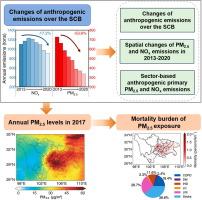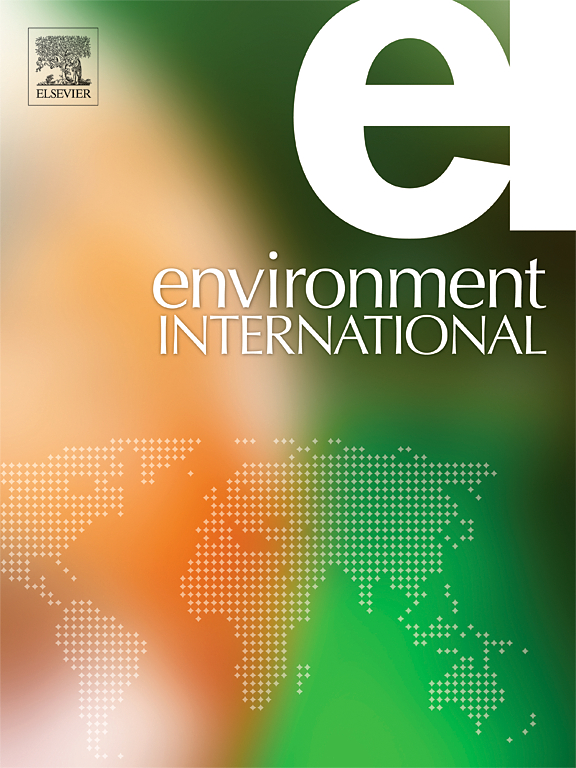2013-2020 年中国四川盆地的细颗粒物污染:来源、排放和死亡负担
IF 10.3
1区 环境科学与生态学
Q1 ENVIRONMENTAL SCIENCES
引用次数: 0
摘要
本文章由计算机程序翻译,如有差异,请以英文原文为准。


Fine particulate matter pollution in the Sichuan Basin of China from 2013 to 2020: Sources, emissions, and mortality burden
Fine particulate matter (PM2.5) pollution is a critical air quality concern which poses threats to public health. Despite strict air pollution control measures implemented in China since 2013, PM2.5 exceedances and region-wide PM2.5 episodes are still frequently observed in the Sichuan Basin (SCB) located in southwestern China. Here, we examine ambient PM2.5 pollution within the SCB from 2013 to 2020, focusing on emission sources, trends, and health outcomes. By integrating ambient measurements, emission inventories, and the health impact model, our findings reveal a notable decrease in PM2.5 levels across the basin, with the Chengdu Plain showing a significant reduction of 56 μg/m3 in 2020 compared to 2013. Despite these improvements, it is still challenging for densely populated cities to attain the national air quality standards. We highlight a 46.8 % reduction in PM2.5 emissions from 2013 to 2020, driven largely by decreased emissions from residential and industrial sources, which accounted for an average of 38.6 % and 50.3 % of total reduced emissions, respectively. In contrast, the decreases of NOx emissions (26.0 %) were less pronounced compared to PM2.5 due to modest reductions from industrial and transportation sectors. Health impact assessments at 1 km × 1 km using the GEMM model attributes 157,637 deaths to long-term PM2.5 exposure in the SCB for 2017, with stroke and ischemic heart disease identified as leading causes. Further analysis indicates that significant variations in population density could greatly amplify the health impacts of long-term PM2.5 exposure, highlighting the need to prioritize PM2.5 reduction strategies specifically targeting megacities to maximize health benefits. These findings underscore the critical need for ongoing emission reduction efforts and the implementation of targeted pollution control measures to further improve air quality and reduce mortality burden in the SCB.
求助全文
通过发布文献求助,成功后即可免费获取论文全文。
去求助
来源期刊

Environment International
环境科学-环境科学
CiteScore
21.90
自引率
3.40%
发文量
734
审稿时长
2.8 months
期刊介绍:
Environmental Health publishes manuscripts focusing on critical aspects of environmental and occupational medicine, including studies in toxicology and epidemiology, to illuminate the human health implications of exposure to environmental hazards. The journal adopts an open-access model and practices open peer review.
It caters to scientists and practitioners across all environmental science domains, directly or indirectly impacting human health and well-being. With a commitment to enhancing the prevention of environmentally-related health risks, Environmental Health serves as a public health journal for the community and scientists engaged in matters of public health significance concerning the environment.
 求助内容:
求助内容: 应助结果提醒方式:
应助结果提醒方式:


